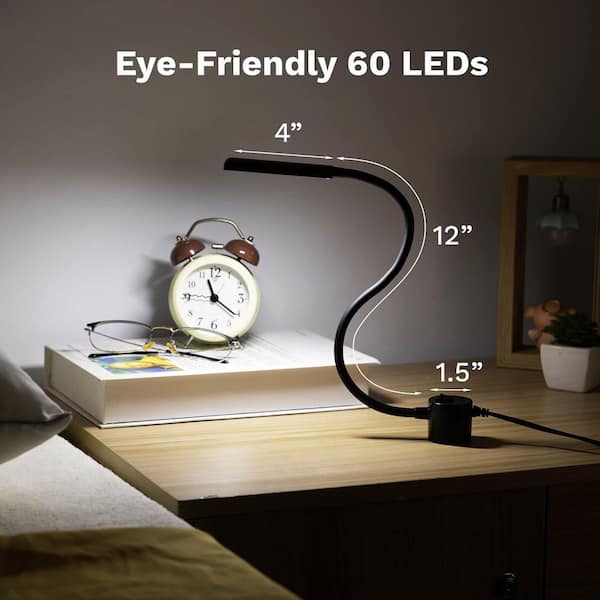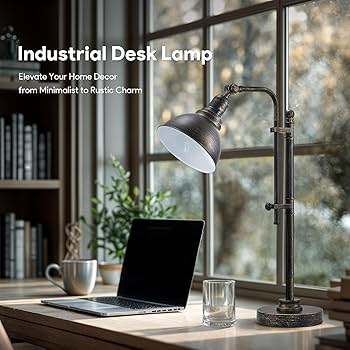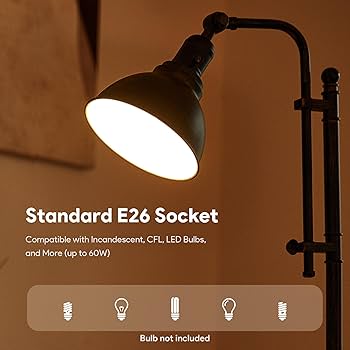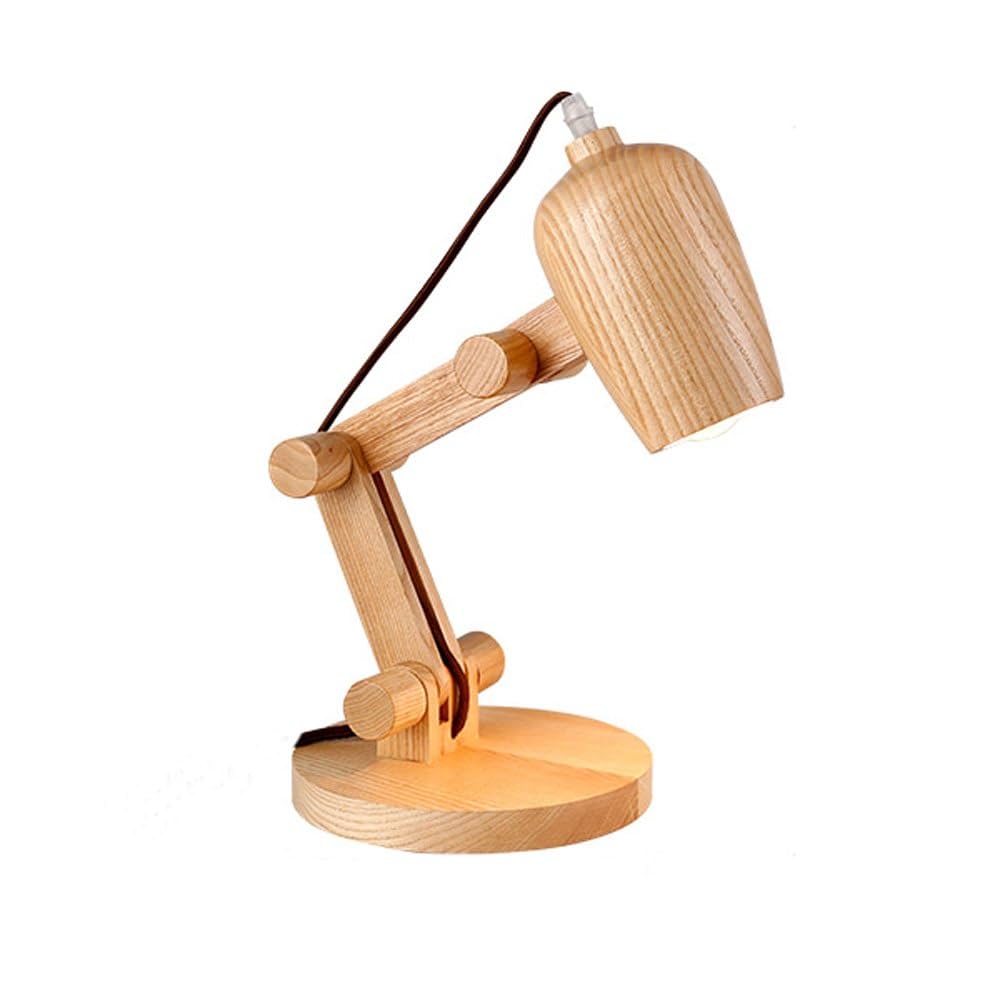Are you wondering if 110 volts is the right power for your desk lamp? Choosing the right voltage isn’t just about plugging in—it affects how bright your lamp shines, how safe it is, and how long it will last.
If you want your workspace to be both comfortable and efficient, understanding the role of 110 volts can make all the difference. Keep reading, and you’ll discover everything you need to know to light up your desk the smart way.

Credit: www.homedepot.com
Voltage Basics For Desk Lamps
Understanding the voltage basics for desk lamps helps you make smarter choices when buying or setting up your lighting. Voltage isn’t just a number; it directly influences how your lamp operates and how safe it is to use. Let’s break down what voltage means for your desk lamp and why 110 volts might be the right—or wrong—choice for you.
Standard Voltage Levels
Desk lamps typically operate within a few standard voltage ranges, depending on where you live. In North America, 110 volts is the common household voltage, while many other countries use 220 to 240 volts.
Here’s a quick look at common voltage levels:
- 110-120 volts:Most common in the US, Canada, and parts of South America.
- 220-240 volts:Standard in Europe, Asia, Africa, and Australia.
- Low voltage (12-24 volts):Found in specialized lamps, often requiring transformers.
Knowing your local voltage standard ensures your desk lamp will work without issues or safety risks. Have you checked if your lamp’s voltage matches your outlet’s supply?
How Voltage Affects Lamp Performance
Voltage impacts the brightness, energy use, and lifespan of your desk lamp’s bulb. Too low a voltage can cause dim light and flickering, while too high can overheat and damage the lamp.
For instance, a 110-volt lamp plugged into a 220-volt outlet will likely burn out quickly or pose a fire hazard. Conversely, using a 220-volt lamp on a 110-volt supply may result in weak light output.
Think about your workspace: do you need bright, consistent light or just a soft glow? Matching the right voltage to your lamp can help you achieve exactly that without wasting energy or risking damage.
Safety Aspects Of 110 Volts
Understanding the safety aspects of 110 volts is essential for using a desk lamp properly. This voltage level is common in many countries for household appliances. It provides enough power for lighting without posing extreme hazards when handled correctly. Still, knowing the safety standards and common risks helps prevent accidents. Safe use protects both the user and the lamp from damage.
Electrical Safety Standards
Electrical safety standards guide the design and use of devices running on 110 volts. These standards ensure safe operation and reduce fire risks. For desk lamps, look for certifications such as UL (Underwriters Laboratories) or CE (Conformité Européenne). These marks show the lamp meets safety requirements for wiring and insulation.
Proper grounding is critical for safety. It prevents electrical shock by redirecting stray currents. Lamps with insulated plugs and cords reduce risk further. Following manufacturer instructions and using the correct bulbs also supports safety.
Common Risks And Precautions
Even at 110 volts, electrical hazards can occur. Common risks include:
- Electric shock from damaged cords or plugs
- Fire hazards from overheating bulbs or poor wiring
- Short circuits due to moisture or faulty parts
Take simple precautions to stay safe. Check the cord and plug for cracks or wear. Avoid using the lamp near water. Use bulbs with the recommended wattage. Turn off and unplug the lamp when not in use or before changing bulbs.
These steps keep desk lamps safe at 110 volts. They help prevent accidents and extend the lamp’s life.
Energy Efficiency Considerations
Energy efficiency plays a vital role in choosing a desk lamp. It impacts electricity bills and environmental footprint. Understanding voltage differences can help make an informed decision.
Power Consumption At 110 Volts
Desk lamps using 110 volts consume moderate power. They are common in many households. These lamps balance brightness and energy use. Lower voltage can mean lower electricity costs. Efficient bulbs further enhance energy savings. LED bulbs are a great choice for 110-volt lamps. They use less power and last longer.
Comparing 110 Volts With Other Voltages
Voltage affects a lamp’s energy efficiency. In regions using 220 volts, lamps may consume less current. This can reduce energy waste. Yet, 110-volt lamps are often safer. They reduce the risk of overheating. Choosing the right bulb type is crucial. Both voltage and bulb type impact energy use.

Credit: www.amazon.com
Choosing The Right Desk Lamp
Choosing the right desk lamp is more than just picking a stylish piece for your workspace. It directly affects your comfort, productivity, and even eye health. Paying attention to key factors like voltage, bulb types, and design can transform your desk into a well-lit, efficient area where you enjoy spending time.
Voltage Compatibility
Desk lamps designed for 110 volts match the standard voltage in many countries, including the United States and Canada. Using a lamp rated for 110 volts ensures safe operation and prevents electrical issues like overheating or damage.
If you live in a country with a different voltage standard, such as 220 volts, using a 110-volt lamp without a proper transformer can cause the lamp to underperform or fail. Always check the voltage rating on the lamp or its packaging before purchase. This simple step can save you from frustration and costly replacements.
Bulb Types And Wattage
The type of bulb you use affects brightness, energy consumption, and heat output. LED bulbs are a popular choice because they offer bright light with low wattage and minimal heat.
Consider the wattage to avoid overpowering your lamp’s electrical components. A 110-volt desk lamp typically supports bulbs up to 60 watts, but many LED bulbs provide the same brightness using only 8-12 watts. This means you get efficient lighting without risking damage to the lamp or increased energy bills.
Design And Functionality
Your desk lamp should fit your workspace and how you work. Adjustable arms and heads let you direct light exactly where you need it, reducing eye strain during reading or detailed tasks.
Think about additional features such as dimmers, USB charging ports, or touch controls. These can add convenience and improve your overall experience with the lamp. Have you tried a lamp that lets you customize brightness? It often changes how comfortable and productive your workspace feels.
Installation Tips For 110 Volt Lamps
Installing a 110-volt desk lamp requires careful attention to safety and compatibility. Proper installation ensures the lamp works efficiently and lasts longer. Follow clear steps to handle wiring, plugs, and routine maintenance. This section covers key tips to help you set up your lamp safely and troubleshoot common issues.
Wiring And Plug Requirements
Use the correct wiring for 110 volts to avoid electrical hazards. The wire must match the lamp’s power needs and the socket type. Check that the plug fits your wall outlet securely.
- Use a standard two- or three-prong plug compatible with 110V outlets.
- Ensure wires are insulated and free from damage.
- Connect wires to the lamp terminals firmly.
- Avoid loose connections to prevent sparks or shorts.
Never modify the plug or wiring unless you are confident in electrical work. For safety, consider consulting a professional electrician.
Maintenance And Troubleshooting
Keep the lamp clean to maintain brightness and avoid overheating. Dust and dirt can block ventilation. Check the cord and plug regularly for damage.
- Unplug the lamp before cleaning.
- Use a dry cloth to wipe the lamp surface.
- Replace bulbs with the correct wattage for 110 volts.
- If the lamp flickers, check the bulb and wiring connections.
- For persistent issues, inspect the fuse or switch.
Regular care helps prevent problems and extends the lamp’s life. Address minor issues early to avoid costly repairs.
Environmental Impact
The environmental impact of using 110 volts for a desk lamp depends on energy use and lighting choices. Lower voltage can reduce power consumption, which helps the environment. Choosing the right lamp and bulb also plays a big role in saving energy and reducing waste.
Energy Savings
Using a desk lamp with 110 volts often means less energy use than higher voltages. This can lower your electricity bill and reduce carbon emissions. Energy-efficient bulbs, like LEDs, work well with 110 volts. They use less power and last longer than traditional bulbs. Small changes in voltage and bulb type can add up to big energy savings over time.
Sustainable Lighting Options
Choosing sustainable lighting options helps protect the environment. LED bulbs are a smart choice because they consume less power and create less heat. Lamps designed for 110 volts often support these energy-saving bulbs. Solar-powered desk lamps also offer a green alternative by using natural light. Opting for recyclable materials in lamp construction reduces waste. Simple choices in lamp voltage and design help create a more eco-friendly home or office.

Credit: www.amazon.com
Frequently Asked Questions
Is 110 Volts Safe For Desk Lamps?
Yes, 110 volts is safe for most desk lamps. This voltage matches standard household outlets in many countries. It provides sufficient power without overheating. Always check the lamp’s voltage rating to ensure compatibility and prevent damage or electrical hazards.
Can 110 Volts Power Led Desk Lamps?
Absolutely, 110 volts can efficiently power LED desk lamps. LEDs require less energy and work well with standard 110-volt outlets. Using 110 volts ensures optimal brightness and energy efficiency. Always verify the lamp’s specifications before plugging it in.
Does 110 Volts Affect Desk Lamp Brightness?
No, 110 volts does not negatively affect lamp brightness. Desk lamps designed for 110 volts deliver consistent light output. Brightness depends more on the bulb type and wattage than voltage. Ensure your lamp is rated for 110 volts for best performance.
Should I Use A Transformer With A 110-volt Desk Lamp?
Usually, you don’t need a transformer for a 110-volt desk lamp. Most desk lamps are designed to operate directly on 110 volts. Use a transformer only if your lamp requires a different voltage to function safely.
Conclusion
Choosing 110 volts for a desk lamp works well for most homes. It provides enough power for good brightness and safe use. Most lamps made for 110 volts run efficiently without overheating. This voltage suits common desk lamps and helps save energy.
Always check the lamp’s label to be sure. Simple, safe, and effective — 110 volts fits many lighting needs. Use it with the right bulbs and enjoy comfortable light for your work or reading.





